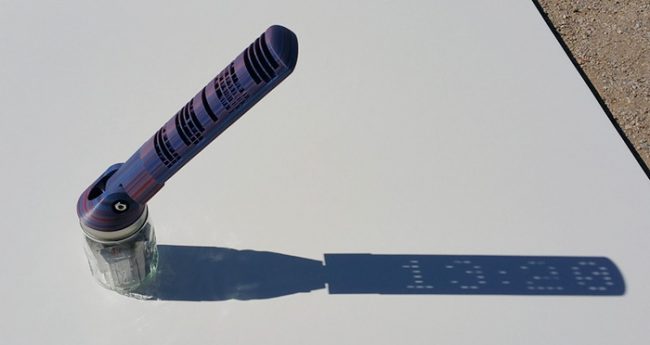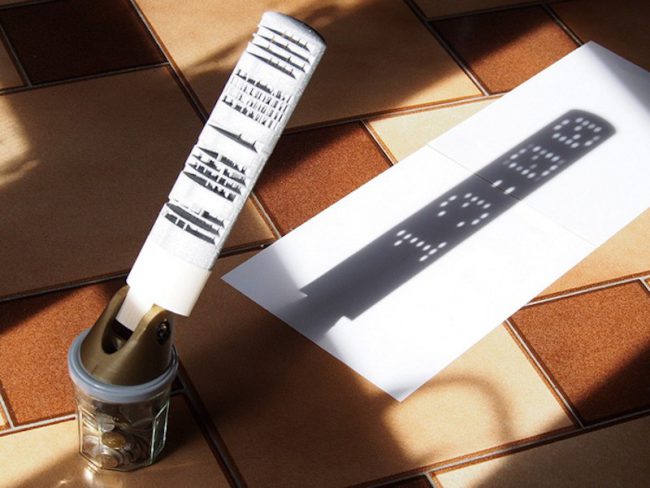There was a time when the sundial was one of the only ways to tell the time. Not sure what a sundial looks like? Here you go.
It works like so. That triangular thing in the centre is called a gnomon (say no-men). The sunshine creates a shadow of the gnomon, which then points to a spot on the dial. Depending on where the sun is as it moves across the sky during the day, a different time is shown. The sundial shown above, for example, is reading at about 3:30.
The first sundials appeared 1500 BCE. And even though people stopped using them as their main clock long ago, the technology that worked then still works today. But now a French designer is giving this ancient device a modern look. Check it out... the world's first digital sundial!

(courtesy of Mojoptix)
Let the light shine through
Now, let's be clear about one thing: this isn't a true digital device. It doesn't use microchips or computers or power. Just like a traditional sundial, it uses only the light of the sun (and the shadows that light leaves behind). The "digital" part comes from the fact that this sundial's shadow shows numbers that look like the display on a digital clock. Such as this fellow.
But the way that this digital sundial makes these numbers appear is all about hundreds of holes and tiny tunnels cut into its plastic frame. (The inventor, who goes by the name Mojoptix, uses a 3D printer to make this sundial and you can download his plans if you have a printer yourself.) As the sun moves through the sky, its light shines through dozens of different holes, but not through others. The many points of light that make it through the sundial then create an image of numbers.
There are limits to this amazing new timekeeper. The Mojoptix sundial can only tell the time between 10:00 and 16:00 (or 10:00 am to 4:00 pm). It also can only tell the time in 20 minute intervals (so 10:00, 10:20, 10:40, 11:00, 11:20, etc.). But overall, we think this device is pretty neat. Not to mention a cool way to think about how the sun moves around the planet. Watch it in action below!
 This amazing French invention has perfect timing! (courtesy of Mojoptix)
This amazing French invention has perfect timing! (courtesy of Mojoptix)










😯